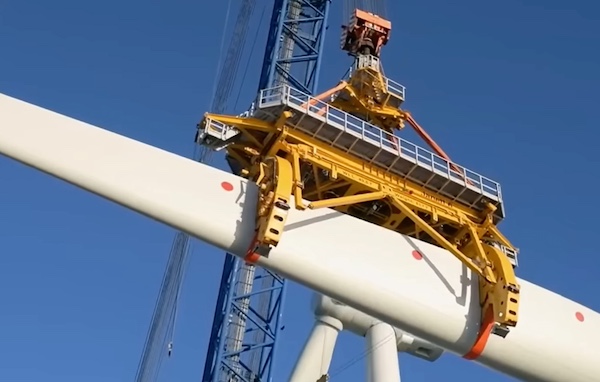
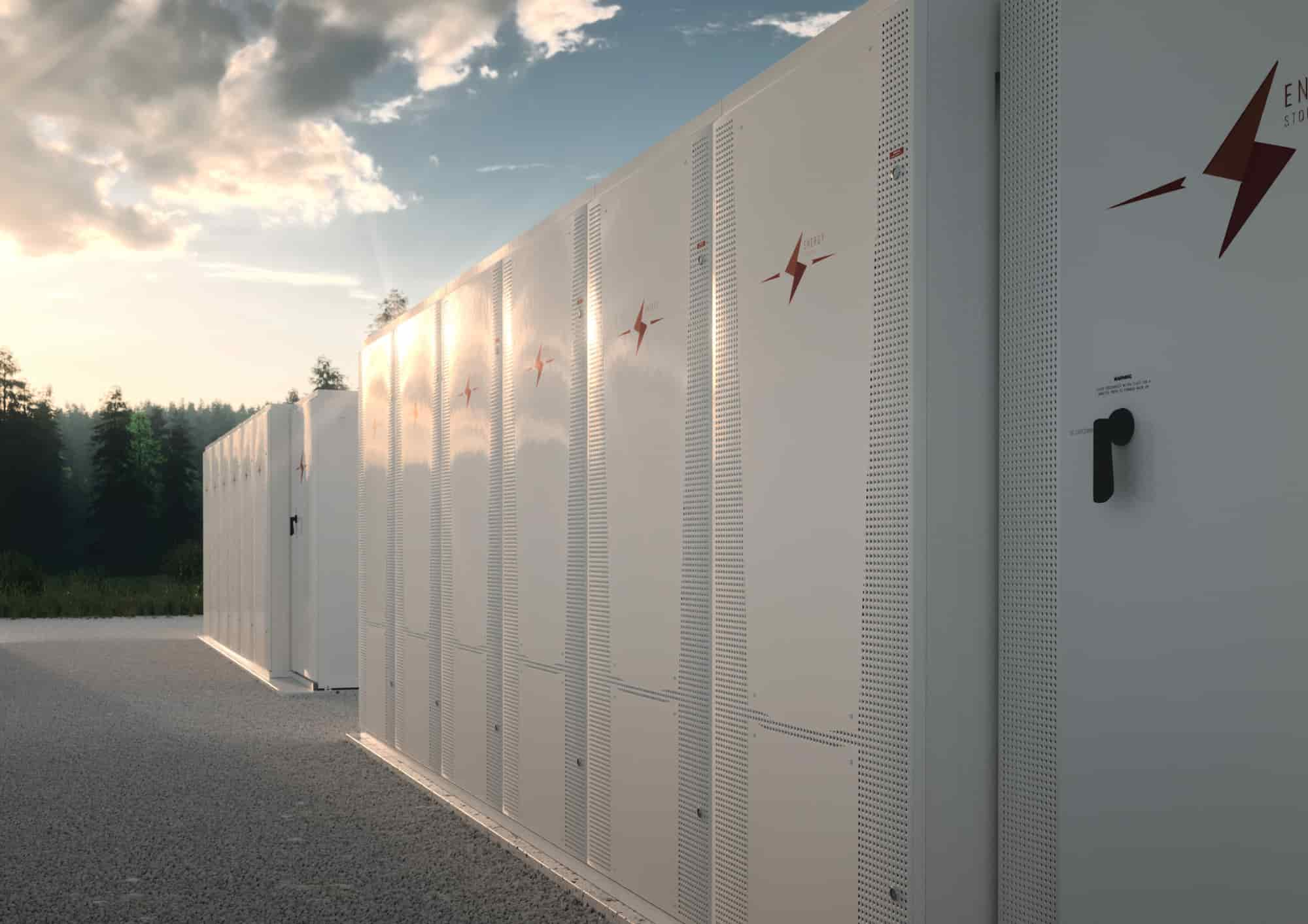
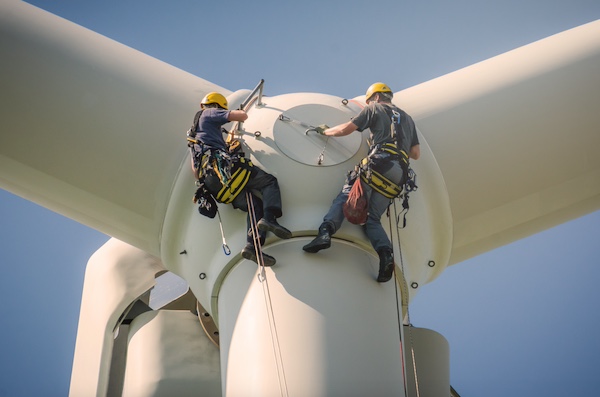

In response to the announcement by the State of New York that it would not move forward with offtake agreements for its third offshore wind solicitation, Oceantic Network, the nation’s leading organization working to advance offshore wind and other ocean renewable energies, voiced confidence in the state leadership’s willingness to take bold action to secure its market. The lack of a final offtake agreement for the Attentive Energy One, Community Offshore Wind, and Excelsior Wind projects came as a result of turbine manufacturer GE Vernova cancelling plans earlier this spring to produce an 18 MW wind turbine that would have been utilized for the projects.
Last fall, the state implemented a bold action plan that helped secure two previously awarded projects after global economic forces rendered the projects unable to move forward financially. Those projects, Empire Wind 1 and Sunrise Wind, are now expected to begin offshore installation next year and are already conducting onshore construction.
The following statement can be attributed to Liz Burdock, founder and CEO of Oceantic Network:
“We are confident New York’s leadership will take the action necessary to maintain their market’s trajectory. The state has already shown its ability and willingness to move swiftly to secure projects on their timelines, and we fully expect the state will continue taking bold action in service of their 9 GW deployment goal. The U.S. market has been steadily building momentum, and while today’s announcement is disappointing, it is not unexpected and will not impact the market’s overall fundamentals. The industry recently celebrated New York’s first project coming online, and this summer two new commercial-scale projects begin installation with two more New York projects close behind.”
Additional Information:
Oceantic Network | https://oceantic.org/
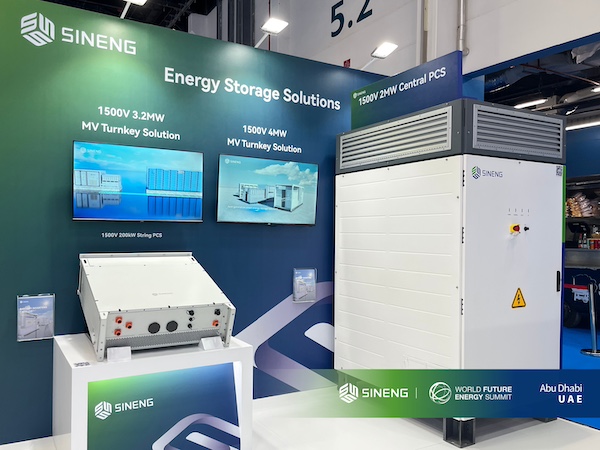
Sineng Electric, a global leading PV+ESS solution provider, has made its debut at the World Future Energy Summit 2024 in Abu Dhabi, UAE. With a vision to catalyze the green transition in the MENA region, Sineng showcased the latest innovations customized for residential, commercial, and utility-scale applications.

Utility-Scale PV Solutions to Empower Changes
Sineng’s booth captured the attention of EPCs, developers, and investors with a lineup of utility-scale PV solutions. The 4.4MW central inverter (EP-4400-HB-UD) stole the spotlight, which can be configured to an 8.8MW MV turnkey station (EP-8800-HB-UD/20~35). Its modular design at the component level, along with 4 MPPTs and PID solutions, helps maximize power generation and optimize LCOE. Complementing this offering is Sineng’s high-power 350kW string inverter (SP-350K-INH), renowned for its compatibility with all PV modules, support for up to 32 PV strings, and a DC/AC ratio of up to 2.0. Moreover, the smart DC switch and IV curve scanning guarantee operational safety and simplified maintenance.
Utility-Scale Energy Storage Solutions to Revolutionize the Power Supply
As the renewables’ share continues to rise, ensuring grid resilience and power quality becomes increasingly imperative. To address these challenges head-on, Sineng has introduced both string and central PCS solutions. At the forefront is the 2MW central PCS (EH-2000-HA-UD) which delivers exceptional performance and reliability, enabling the seamless integration of renewable energy resources into the grid. The string PCS solution (EH-0200-HA-M), with a capacity of 200kW per unit and the ability to combine up to 20 units, can achieve a total capacity of 4MW. Its flexible scalability meets the diverse needs of utility-scale deployments.
Tailored Solutions for Commercial and Residential Needs
In addition to utility-scale products, Sineng unveils cutting-edge solutions for commercial and residential scenarios. Of particular note is the three-phase hybrid inverter SN5.0-15HT with RHP series HV battery. With a rapid mode switch time of less than 10 milliseconds, this system ensures uninterrupted power supply, effectively alleviating concerns about power outages. Furthermore, the SN100-125PT, crafted for commercial rooftop projects, features a maximum DC input current of 64A per MPPT and is compatible with bifacial PV modules. Its higher power density, compact size, and lightweight design simplify the installation process, offering extraordinary convenience.
Qiang Wu, Chairman of Sineng Electric, emphasized the company's customer-centric approach, robust technical expertise and top-notch after-sales service. "Our company's paramount focus remains on our customers, as we continue to prioritize their needs and provide extraordinary service throughout the MENA region,” stated Wu. He further highlighted, "Our presence at WFES exemplifies our relentless dedication to driving the energy transition forward, empowering stakeholders with innovative, advanced, and future-proof energy solutions."
Sineng Electric | https://en.si-neng.com/
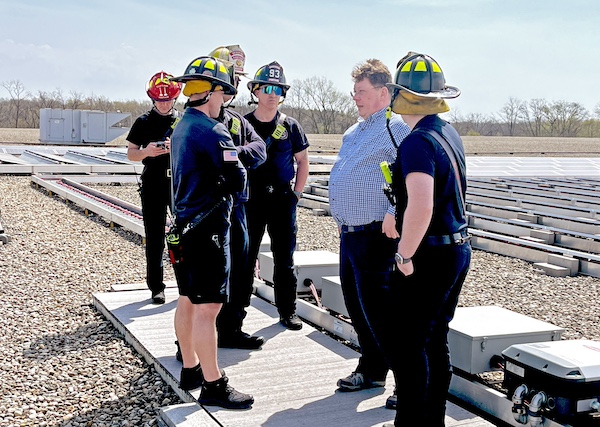
On April 16-18, 2024, Fronius USA was honored to have opened the doors of its US Headquarters’ solar panel roof and solar inverter lab to local fire department officials of the City of Portage’s Fire Department for fire safety training on solar power equipment. The Solar Solutions Management team at Fronius USA provided technical training on PV systems, which consisted of rapid shutdown procedures and safety features for solar systems, as well as energy storage and electronic vehicle chargers.

"We are very committed to the community and are pleased to have hosted the honorable Portage firefighters at our 400,000-square-foot facility to provide fire safety instruction with the Fronius string inverters and our commercial rooftop and solar tracker systems.” said Klaus Strassmair, Managing Director at Fronius USA. “We also welcome them to return for future trainings with our dedicated in-house Solar staff,” added Strassmair.
“Fronius is dedicated to incorporating fire and safety features in Fronius inverters by leading in arc fault detection and rapid shutdown solutions that keep the number of potential failure points low,” says Richard Baldinger, Director of Sales & Marketing Business Unit Solar Energy at Fronius USA.
“Fronius was the first place that we considered to contact for solar training needs especially since Fronius has been manufacturing inverters for over 20 years, with Fronius being a pioneer in the solar industry,” said Tim Fercik, Lieutenant of the Portage Fire Department. “Their in-house solutions group provided PV knowledge and insight that we were looking to gain on how to handle fire department situations where firefighters would interact with a solar powered system,” added Fercik.

"We were extremely happy to welcome and train the Portage Fire Department on a nationally recognized standard UL 3741, Photovoltaic Hazard Control, which provides a reduced level of shock hazard from energized PV Systems," said Chris Connell, Head of Solutions Management at Fronius USA.
“With the ever-growing interest in solar panel installation, not only applying to the residents and the businesses in Portage, IN, but also within the United States of America, training on how to put out fires when solar systems are installed can be cumbersome to find,” said Austin Bonta, Mayor of the City of Portage. “We are truly thankful for the presentation and the hands-on training that was provided by the knowledgeable solutions team at Fronius USA,” added Bonta.
With solar inverters as the heart of the photovoltaic system, that convert direct current (DC) electricity from solar panels to alternating current (AC) electricity to power homes and businesses, there’s a high importance to educate firefighters on how rapid shutdown can be properly used to cut off the energy produced at the solar module so that they can safely perform their duties on or around solar energy equipment. Fronius Arc Guard technology is also a safety element that is triggered to automatically detect arcs in the DC circuit with algorithm technology, as the system will accurately interrupt the fault and stop the arc to provide photovoltaic system protection.
Fronius USA | https://www.fronius.com/en-us/usa
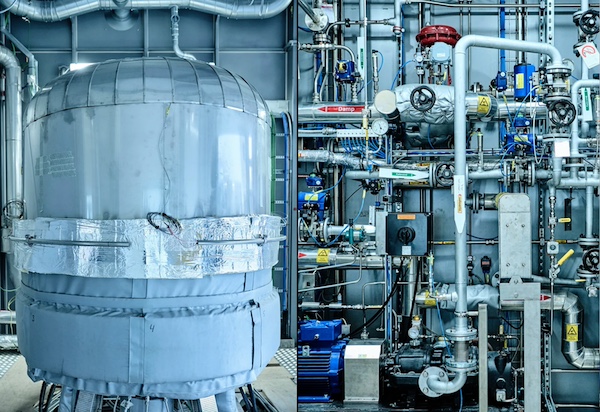
Topsoe, a global leader in carbon emission reduction technologies, announced plans to build a cutting-edge factory in Chesterfield, Virginia. The factory will manufacture advanced, energy efficient Solid Oxide Electrolyzer Cells (SOEC) that are essential to the efficient production of clean hydrogen and derivatives like eAmmonia and eMethanol.
The decision by Topsoe to announce its plan for its largest investment in the US to date comes after the company received an allocation for nearly $136 million in federal Section 48C tax credits from the Inflation Reduction Act.
Subject to Final Investment Decision, this more than $400M investment is expected to create at least 150 direct jobs in Virginia and more than 1,000 indirect jobs through the value chain.
With a planned capacity of more than 1 GW, the factory's output of electrolyzer stacks will enable an annual greenhouse gas emission avoidance of up to 2 million tonnes CO2e – the equivalent of avoiding the emissions from more than 400,000 gasoline-powered passenger vehicles driven for a year.
Electrolyzers are key for decarbonizing energy-intensive industries, like steel, mining, and long-distance transportation that account for approximately 30% of global greenhouse gas emissions, and where direct electrification is not a viable solution.
Topsoe’s SOEC technology increases electrolyzer efficiency up to 30% compared to other electrolysis technologies, and thereby produces more hydrogen per total power input.
Governor Glenn Youngkin said:
“I am thrilled that Topsoe has chosen the great Commonwealth of Virginia for its new, state-of-the-art factory that will be key to scaling clean hydrogen production. Virginia’s robust workforce, strategic location, and top business climate provide the necessary tools for Topsoe to continue to grow as a leader in the clean energy industry."
US Senator Mark R. Warner said:
“The Inflation Reduction Act represented a bold step towards maintaining American leadership in manufacturing, creating the next generation of clean energy jobs, and combatting climate change. I’m glad to see that vision executed in Chesterfield County with the announcement of a new Topsoe manufacturing facility. Thanks to tax credits from this landmark law, Virginia will continue to power our nation and lead the clean energy transition by creating good-paying manufacturing jobs across the Commonwealth.”
US Senator Tim Kaine said:
“I’m thrilled that Topsoe will be setting up a state-of-the-art facility in Chesterfield County to help manufacture clean energy components. This wouldn’t have been possible without the investments we made in the Inflation Reduction Act, which I was proud to have helped pass in the Senate by one vote. I look forward to seeing how this project will boost economic growth, create jobs, and help us build a clean energy future.”
US Representative Jennifer McClellan said:
“This new Topsoe facility in Chesterfield County will create hundreds of new jobs and stimulate millions of dollars in economic activity right here in Virginia’s Fourth. I will continue fighting with Senators Warner and Kaine to supercharge our transition to a clean-energy future and bring federal investments to our Commonwealth.”
Roeland Baan, CEO at Topsoe, said:
“We are thrilled to announce our plans for a new state-of the art US facility that will manufacture Solid Oxide Electrolyzer Cell stacks (SOEC), the key element to the world’s most efficient electrolyzer technology for producing clean hydrogen. Through legislation like the Inflation Reduction Act and strong support from individual states such as Virginia, the US government is helping to accelerate the clean energy transition. With our strong dedication to innovation, we will help the US achieve its goals of driving down the cost of clean hydrogen and delivering clean energy jobs.”
Kim Hedegaard, CEO at Power-to-X at Topsoe, said:
“We at Topsoe believe in a sustainable future created by science. With this new facility, we will help drive down the cost of clean hydrogen by employing our innovative SOEC technology which is up to 30% more efficient than competing technologies. Our factory will ensure the economic and environmental aspects of the hydrogen economy are felt in the decades to come.”
Topsoe’s SOEC electrolysis technology is a modular design that operates at significantly higher temperatures compared to other electrolyzer technologies – a tested and proven process that enables industrial-scale production of green hydrogen using renewable electricity.
When coupled with waste heat from downstream production (from processes producing ammonia, methanol or steel production), Topsoe’s SOEC technology will produce up to 30% more hydrogen per total power input when compared to conventional electrolyzer technologies. It further allows for the lowest levelized hydrogen cost per megawatt volume, no matter the industry.
What is Power-to-X?
Power-to-X refers to a range of technologies that convert electricity,
particularly from renewable sources, into other forms of energy or products. This conversion process is primarily driven by the production of hydrogen through electrolysis – a process in which water is split into hydrogen and oxygen using electricity. The resulting hydrogen, known as green or clean hydrogen when produced using renewable electricity, can either be used directly or serve as a base reactant to produce a variety of energy carriers and fuels. By changing the form of renewable energy from electricity to molecules, it becomes better suited to decarbonizing industries that cannot be directly electrified fully and at scale.
Topsoe | www.topsoe.com

In response to the national media attention drawn to bad actors in the solar industry, the nonprofit Solar United Neighbors is ramping up its efforts to educate and support solar customers so they have a good experience going solar.
The overwhelming majority of solar homeowners are happy with their decision, with almost 90 percent of homeowners polled by Forbes reporting satisfaction with their choice. But a happy story doesn’t make the news and these stories have the potential to cause further damage by scaring potential consumers away from a reliable and cost-effective electricity resource.
That’s why SUN announced the launch of its Solar Help Desk. This resource is designed to guide through the complexities of solar adoption.
“Think about any home renovation project you’d do, how helpful would it be to have an unbiased person to guide you through it for free?” said Ben Delman, Solar United Neighbors’ Communications Director. “That’s the role our Solar Help Desk plays. We’re here with you every step of the way to make sure you go solar with peace of mind.”
The booming US solar industry, accelerated by the Inflation Reduction Act of August 2022, has also seen a disturbing rise in reports of solar scams. False advertising, often promising free or low-cost solar panels, have misled many homeowners, leading to financial losses. To combat this, the Solar Help Desk offers free roof reviews, online chats with solar advisors, and personal phone calls to provide reliable, unbiased advice and support.
Click HERE to go to Solar Help Desk
The Cherry family from Washington, D.C. exemplifies the Help Desk's vital role. "We were inundated with misleading offers until Solar United Neighbors provided clear and honest guidance," says Dane Cherry. Their story underscores the need for an independent advisory to navigate the solar market safely.
Ben Delman, Senior Director of Communications at SUN, emphasizes the timeliness of this initiative. "As more Americans turn to solarit's crucial they have a trusted ally. Our Solar Help Desk is that ally, offering transparent and pressure-free guidance."
As consumer watchdogs and legal authorities raise alarms over confusing or deceptive market practices, SUN's Solar Help Desk stands as a beacon of reliable and transparent information in the solar installation market.
Solar United Neighbors | https://www.solarunitedneighbors.org/

The Utilities for Net Zero Alliance (UNEZA) adopted the UNEZA Roadmap to 2030, which targets a total increase of renewable energy capacity within their portfolios to 749GW by 2030*, an increase of 2.5 times relative to 2023. Alliance members’ joint renewables ambition was announced alongside a grid infrastructure action plan.
The plan, revealed at the 14th Assembly of the International Renewable Energy Agency (IRENA), addresses the pressing need to scale and modernise global grid infrastructure to support clean power development and the tripling of renewables by 2030. According to IRENA, around US$720 billion per year of investment in power grids and flexibility is needed, to limit global warming to 1.5°C.
In a joint, high-level statement, Alliance CEOs stressed the centrality of enabling grid infrastructure and urged the policy and regulatory community to engage industry to address bottlenecks and unlock capital flows.
The UNEZA action plan focuses on three key critical areas:
De-risking supply chains.
Facilitating policy & regulatory support.
Mobilizing capital.
The joint statement and action plan were announced on the 17th of April, 2024 at the 14th IRENA Assembly Ministerial Roundtable ‘Infrastructure for the Energy Transition: Utilities for Net Zero Alliance’.
Francesco La Camera, IRENA Director-General said: "The shift towards a renewables-based energy system is accelerating, and with the adoption of a global goal to triple renewable power capacity by 2030 at COP28, this trend is expected to intensify. IRENA’s WETO shows that this goal will be met only with the modernisation of infrastructure designed for the fossil fuel era to more interconnected and flexible systems that support renewables. The announcement of a grid infrastructure action plan by the Utilities for Net Zero Alliance is a significant step to addressing this urgent need, showcasing the central role that utilities can play in transforming our energy systems and realising net zero targets.”
H.E. Razan Khalifa Al Mubarak UN Climate Change High-Level Champion said: “Utilities play a crucial role in delivering mitigation measures that align global development with a net-zero future and are central to a future energy system that is in harmony with nature and the environment. Building on the momentum from COP28, we are advancing the design and implementation of our action plan and call on utilities around the world to join this initiative, showcasing their ongoing commitment to meaningful action.”
Jasim Husain Thabet, TAQA’s Group Chief Executive Officer and Managing Director, and Co-Chair of the Alliance, said: “The global utilities community is taking bold, decisive steps towards the tripling of renewables by 2030, not just in terms of our concrete investment plans but also in our drive to address energy transition bottlenecks – particularly for grids. It is increasingly recognized that grid infrastructure development is critical to enable the energy transition and expansion of clean power capacity. However, we need to do more across industry and policy to encourage more supply chain capacity, address the gridlock in permitting for grids and increase capital flows.”
Martin Pibworth, Chief Commercial Officer at SSE plc, Co-Chair of UNEZA, said: "Our combined plans for accelerating renewables deployment will go a long way towards achieving our 2030 goal, but we also know that utilities can’t do it alone. We also need to build resilient supply chains that can meet this surge in demand, and we need bold enabling policy and regulatory mechanisms to underpin investments and accelerate the speed at which we can build. That is why we are coming together today to demonstrate our intent to the global supply chain and offer practical, actionable recommendations to policy makers which we hope will help unlock real delivery on the ground and keep us on a pathway to trebling renewables this decade.”
Launched at COP28, UNEZA counts many of the leading global utilities among its membership. Led by the UAE’s TAQA (Abu Dhabi National Energy Company), founding entities also include Bui Power Authority, DEWA, DLO Energy, EDF, EDP, Edison International, E.ON, Enel, Engie, Etihad Water and Electricity, Hitachi Energy, Iberdrola, Jinko Power, KEGOC, KenGen, Masdar, National Grid, Octopus Energy, RWE, Sacremento Municipal Utility District, Schneider Electric, Siemens, SSE, Tenaga, Uniper and Xlinks. Green Grids Initiative and ACWA Power are recent new additions to the community.
The Alliance secretariat is guided and hosted by IRENA and supported by partners including the UN Climate Change High-Level Champions, International Electrotechnical Commission (IEC), Global Renewables Alliance and Coordinador Eléctrico Nacional, Green Grids Initiative.
UNEZA invites companies to join the common vision of accelerating the energy transition. The Membership is open to utilities, developers, power system technology companies and knowledge partners determined to expedite the transition towards a net zero future by 2050.
*UNEZA members may work jointly on projects between now and 2030 which may alter the total net impact of renewables additionally within the group’.
Utilities for Net Zero Alliance | https://utilitiesfornetzero.org/
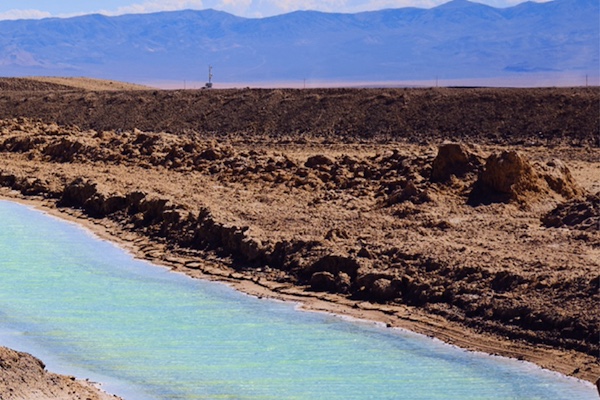
The United States has a generational opportunity to build next-generation lithium-based batteries to power electric vehicles and support the grid. However, the U.S. must address significant supply chain challenges to create a thriving domestic battery industry.
At a recent forum, more than 50 government and industry leaders brainstormed creative solutions to grow secure, sustainable battery supply chains and recycling infrastructure in the U.S. The event was organized by Li-Bridge, a public-private alliance committed to advancing domestic battery supply chains. The forum was managed by the U.S. Department of Energy’s (DOE) Argonne National Laboratory in coordination with three industry associations—NAATBatt International, New York Battery and Energy Storage Technology Consortium, and New Energy Nexus.
The group agreed on the most impactful policies and actions to ensure a reliable supply of battery materials for U.S. manufacturers. These recommendations are detailed in a recent Li-Bridge report.
“The minerals from lithium-ion batteries at end-of-life will be a key strategic resource in the future,” said Michael Berube, deputy assistant secretary for sustainable transportation and fuels at DOE. “By taking coordinated action now, we can ensure that the domestic battery recycling industry is well positioned to gather, transport, process, and recycle these batteries to meet our needs.”
A top challenge identified in the report: the economics of lithium battery recycling are poor because the collection, transportation, and processing costs to recycle materials are high relative to the materials’ intrinsic value. To improve the economics, one of the report’s recommendations is to boost R&D investment in low-cost ways to recapture low-value materials and components.
The report also delves into numerous ways to make battery collection, storage, transportation, and disassembly more effective and less costly. For instance, there is limited collection of spent batteries from cell phones, laptops, and other consumer electronics. The report recommends better economic incentives to encourage consumers to take their devices to collection facilities.
Many batteries and used electric vehicles are shipped to other countries. The report suggests the use of export controls as one possible tool to control this offshore “leakage.”
Building on the forum’s success, Li-Bridge plans to convene additional events. One possible topic is visibility and traceability of battery material flows through supply chains and at end-of-life.
Li-Bridge is funded by DOE’s Office of Energy Efficiency and Renewable Energy, Vehicle Technologies Office.
Argonne National Laboratory | www.anl.gov
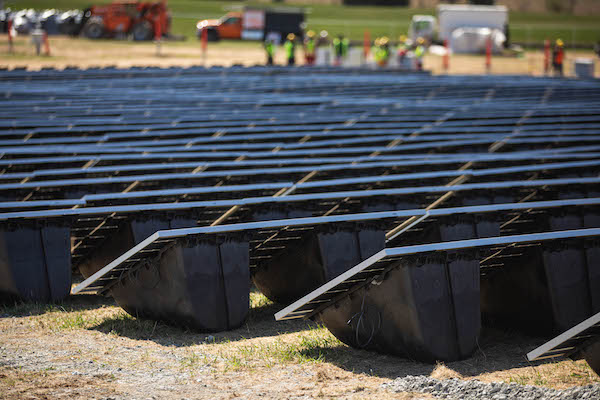
Alternative Energies May 15, 2023
The United States is slow to anger, but relentlessly seeks victory once it enters a struggle, throwing all its resources into the conflict. “When we go to war, we should have a purpose that our people understand and support,” as former Secretary ....

Unleashing trillions of dollars for a resilient energy future is within our grasp — if we can successfully navigate investment risk and project uncertainties.
The money is there — so where are the projects?
A cleaner and more secure energy future will depend on tapping trillions of dollars of capital. The need to mobilize money and markets to enable the energy transition was one of the key findings of one of the largest studies ever conducted among the global energy sector C-suite. This will mean finding ways to reduce the barriers and uncertainties that prevent money from flowing into the projects and technologies that will transform the energy system. It will also mean fostering greater collaboration and alignment among key players in the energy space.
 Interestingly, the study found that insufficient access to finance was not considered the primary cause of the current global energy crisis. In fact, capital was seen to be available — but not being unlocked. Why is that? The answer lies in the differing risk profiles of energy transition investments around the world. These risks manifest in multiple ways, including uncertainties relating to project planning, public education, stakeholder engagement, permitting, approvals, policy at national and local levels, funding and incentives, technology availability, and supply chains.
Interestingly, the study found that insufficient access to finance was not considered the primary cause of the current global energy crisis. In fact, capital was seen to be available — but not being unlocked. Why is that? The answer lies in the differing risk profiles of energy transition investments around the world. These risks manifest in multiple ways, including uncertainties relating to project planning, public education, stakeholder engagement, permitting, approvals, policy at national and local levels, funding and incentives, technology availability, and supply chains.
These risks need to be addressed to create more appealing investment opportunities for both public and private sector funders. This will require smart policy and regulatory frameworks that drive returns from long-term investment into energy infrastructure. It will also require investors to recognize that resilient energy infrastructure is more than an ESG play — it is a smart investment in the context of doing business in the 21st century.
Make de-risking investment profiles a number one priority
According to the study, 80 percent of respondents believe the lack of capital being deployed to accelerate the transition is the primary barrier to building the infrastructure required to improve energy security. At the same time, investors are looking for opportunities to invest in infrastructure that meets ESG and sustainability criteria. This suggests an imbalance between the supply and demand of capital for energy transition projects.
How can we close the gap?
One way is to link investors directly to energy companies. Not only would this enable true collaboration and non-traditional partnerships, but it would change the way project financing is conceived and structured — ultimately aiding in potentially satisfying the risk appetite of latent but hugely influential investors, such as pension funds. The current mismatch of investor appetite and investable projects reveals a need for improving risk profiles, as well as a mindset shift towards how we bring investment and developer stakeholders together for mutual benefit. The circular dilemma remains: one sector is looking for capital to undertake projects within their skill to deploy, while another sector wonders where the investable projects are.
This conflict is being played out around the world; promising project announcements are made, only to be followed by slow progress (or no action at all). This inertia results when risks are compounded and poorly understood. To encourage collaboration between project developers and investors with an ESG focus, more attractive investment opportunities can be created by pulling several levers: public and private investment strategies, green bonds and other sustainable finance instruments, and innovative financing models such as impact investing.
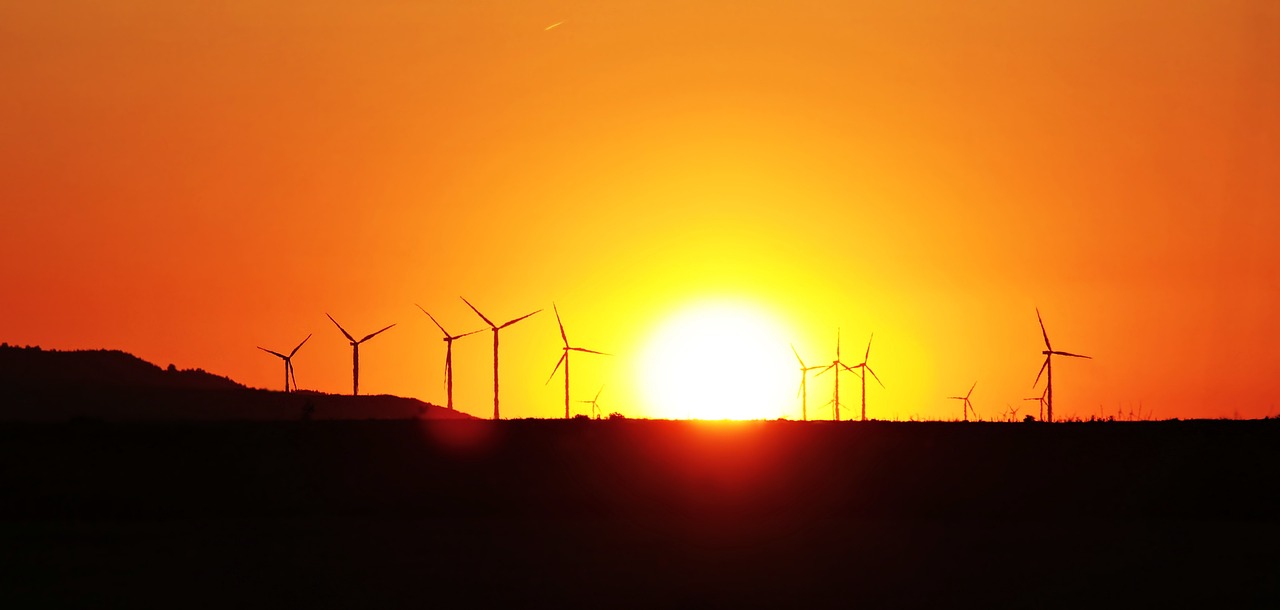
Expedite permitting to speed the adoption of new technologies
Another effective strategy to de-risk investment profiles is found in leveraging new technologies and approaches that reduce costs, increase efficiency, and enhance the reliability of energy supply. Research shows that 62 percent of respondents indicated a moderate or significant increase in investment in new and transitional technologies respectively, highlighting the growing interest in innovative solutions to drive the energy transition forward.
Hydrogen, carbon capture and storage, large-scale energy storage, and smart grids are some of the emerging technologies identified by survey respondents as having the greatest potential to transform the energy system and create new investment opportunities. However, these technologies face challenges such as long lag times between conception and implementation.
If the regulatory environment makes sense, then policy uncertainty is reduced, and the all-important permitting pathways are well understood and can be navigated. Currently, the lack of clear, timely, and fit-for-purpose permitting is a major roadblock to the energy transition. To truly unleash the potential of transitional technologies requires the acceleration of regulatory systems that better respond to the nuance and complexity of such technologies (rather than the current one-size-fits all approach). In addition, permitting processes must also be expedited to dramatically decrease the period between innovation, commercialization, and implementation. One of the key elements of faster permitting is effective consultation with stakeholders and engagement with communities where these projects will be housed for decades. This is a highly complex area that requires both technical and communication skills.
The power of collaboration, consistency, and systems thinking
The report also reveals the need for greater collaboration among companies in the energy space to build a more resilient system. The report shows that, in achieving net zero, there is a near-equal split between those increasing investment (47 percent of respondents), and those decreasing investment (39 percent of respondents). This illustrates the complexity and diversity of the system around the world. A more resilient system will require all its components – goals and actions – to be aligned towards a common outcome.
Another way to de-risk the energy transition is to establish consistent, transparent, and supportive policy frameworks that encourage investment and drive technological innovation. The energy transition depends on policy to guide its direction and speed by affecting how investors feel and how the markets behave. However, inconsistent or inadequate policy can also be a source of uncertainty and instability. For example, shifting political priorities, conflicting international standards, and the lack of market-based mechanisms can hinder the deployment of sustainable technologies, resulting in a reluctance to commit resources to long-term projects.
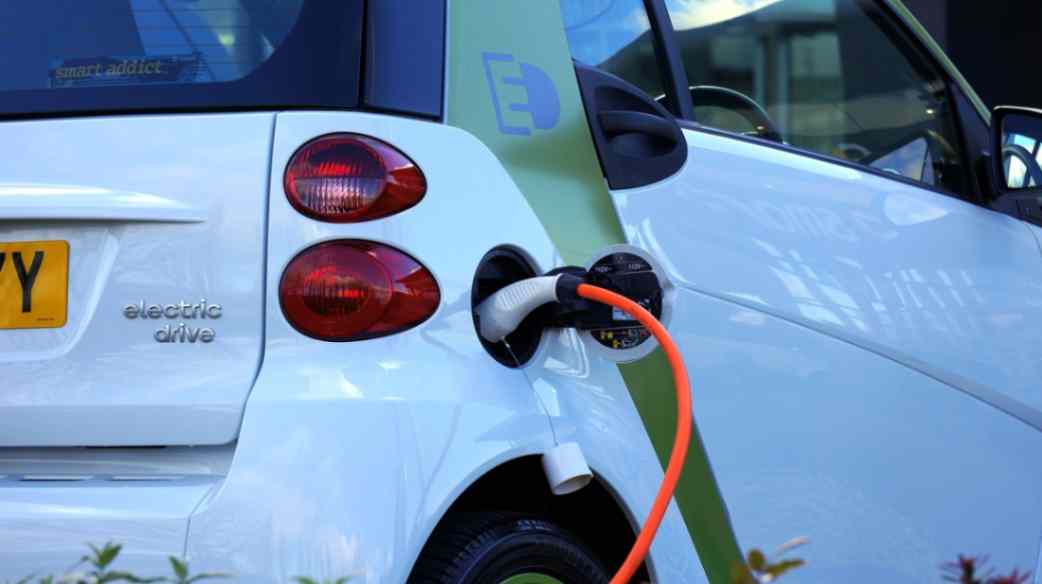
Variations in country-to-country deployment creates disparities in energy transition progress. For instance, the 2022 Inflation Reduction Act in the US has posed challenges for the rest of the world, by potentially channeling energy transition investment away from other markets and into the US. This highlights the need for a globally unified approach to energy policy that balances various national interests while addressing a global problem.
To facilitate the energy transition, it is imperative to establish stable, cohesive, and forward-looking policies that align with global goals and standards. By harmonizing international standards, and providing clear and consistent signals, governments and policymakers can generate investor confidence, helping to foster a robust energy ecosystem that propels the sector forward.
Furthermore, substantive and far-reaching discussions at international events like the United Nations Conference of the Parties (COP), are essential to facilitate this global alignment. These events provide an opportunity to de-risk the energy transition through consistent policy that enables countries to work together, ensuring that the global community can tackle the challenges and opportunities of the energy transition as a united front.
Keeping net-zero ambitions on track
Despite the challenges faced by the energy sector, the latest research reveals a key positive: 91 percent of energy leaders surveyed are working towards achieving net zero. This demonstrates a strong commitment to the transition and clear recognition of its importance. It also emphasizes the need to accelerate our efforts, streamline processes, and reduce barriers to realizing net-zero ambitions — and further underscores the need to de-risk energy transition investment by removing uncertainties.
The solution is collaborating and harmonizing our goals with the main players in the energy sector across the private and public sectors, while establishing consistent, transparent, and supportive policy frameworks that encourage investment and drive technological innovation.
These tasks, while daunting, are achievable. They require vision, leadership, and action from all stakeholders involved. By adopting a new mindset about how we participate in the energy system and what our obligations are, we can stimulate the rapid progress needed on the road to net zero.
Dr. Tej Gidda (Ph.D., M.Sc., BSc Eng) is an educator and engineer with over 20 years of experience in the energy and environmental fields. As GHD Global Leader – Future Energy, Tej is passionate about moving society along the path towards a future of secure, reliable, and affordable low-carbon energy. His focus is on helping public and private sector clients set and deliver on decarbonization goals in order to achieve long-lasting positive change for customers, communities, and the climate. Tej enjoys fostering the next generation of clean energy champions as an Adjunct Professor at the University of Waterloo Department of Civil and Environmental Engineering.
GHD | www.ghd.com
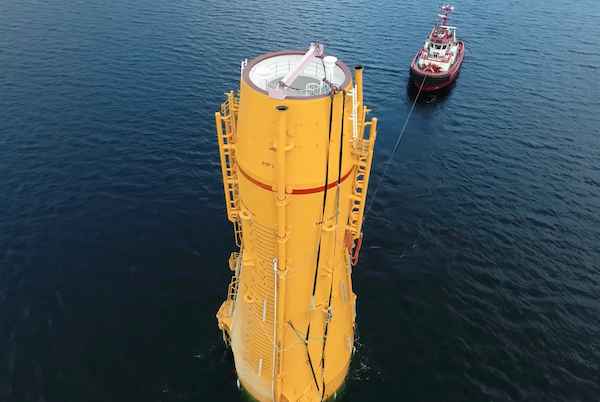
The Kincardine floating wind farm, located off the east coast of Scotland, was a landmark development: the first commercial-scale project of its kind in the UK sector. Therefore, it has been closely watched by the industry throughout its installation. With two of the turbines now having gone through heavy maintenance, it has also provided valuable lessons into the O&M processes of floating wind projects.
In late May, the second floating wind turbine from the five-turbine development arrived in the port of Massvlakte, Rotterdam, for maintenance. An Anchor Handling Tug Supply (AHTS)
vessel was used to deliver the KIN-02 turbine two weeks after a Platform Supply Vessel (PSV) and AHTS had worked to disconnect the turbine from the wind farm site. The towing vessel became the third vessel used in the operation.
This is not the first turbine disconnected from the site and towed for maintenance. In the summer of 2022, KIN-03 became the world’s first-ever floating wind turbine that required heavy maintenance (i.e. being disconnected and towed for repair). It was also towed from Scotland to Massvlakte.
Each of these operations has provided valuable lessons for the ever-watchful industry in how to navigate the complexities of heavy maintenance in floating wind as the market segment grows.

The heavy maintenance process
When one of Kincardine’s five floating 9.5 MW turbines (KIN-03) suffered a technical failure in May 2022, a major technical component needed to be replaced. The heavy maintenance strategy selected by the developer and the offshore contractors consisted in disconnecting and towing the turbine and its floater to Rotterdam for maintenance, followed by a return tow and re-connection. All of the infrastructure, such as crane and tower access, remained at the quay following the construction phase. (Note, the following analysis only covers KIN-03, as details of the second turbine operation are not yet available).
Comparing the net vessel days for both the maintenance and the installation campaigns at this project highlights how using a dedicated marine spread can positively impact operations.
For this first-ever operation, a total of 17.2 net vessel days were required during turbine reconnection—only a slight increase on the 14.6 net vessel days that were required for the first hook-up operation performed during the initial installation in 2021. However, it exceeds the average of eight net vessel days during installation. The marine spread used in the heavy maintenance operation differed from that used during installation. Due to this, it did not benefit from the learning curve and experience gained throughout the initial installation, which ultimately led to the lower average vessel days.
The array cable re-connection operation encountered a similar effect. The process was performed by one AHTS that spent 10 net vessel days on the operation. This compares to the installation campaign, where the array cable second-end pull-in lasted a maximum of 23.7 hours using a cable layer.
Overall, the turbine shutdown duration can be broken up as 14 days at the quay for maintenance, 52 days from turbine disconnection to turbine reconnection, and 94 days from disconnection to the end of post-reconnection activities.
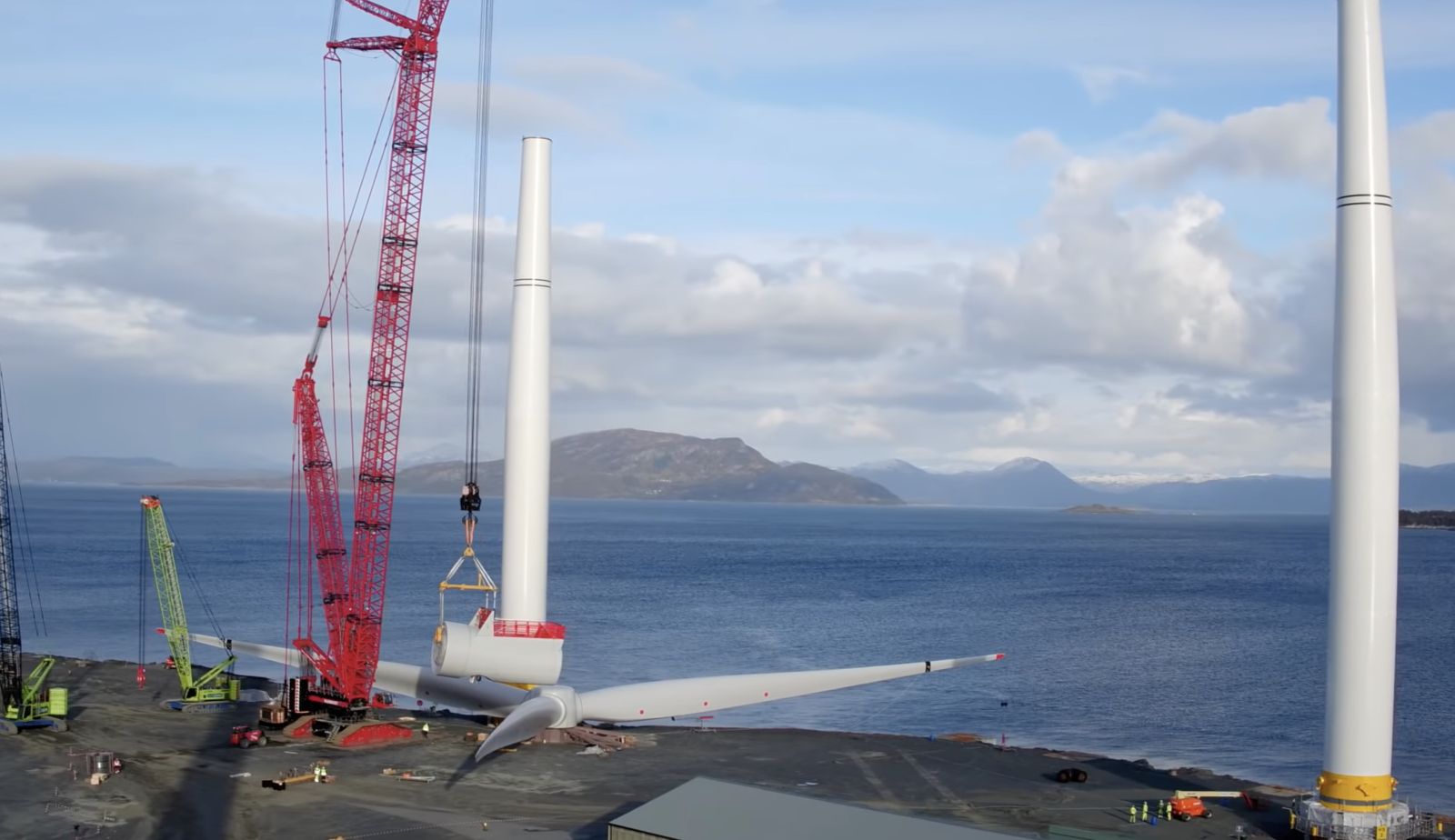
What developers should keep in mind for heavy maintenance operations
This analysis has uncovered two main lessons developers should consider when planning a floating wind project: the need to identify an appropriate O&M port, and to guarantee that a secure fleet is available.
Floating wind O&M operations require a port with both sufficient room and a deep-water quay. The port must also be equipped with a heavy crane with sufficient tip height to accommodate large floaters and reach turbine elevation. Distance to the wind farm should also be taken into account, as shorter distances will reduce towing time and, therefore, minimize transit and non-productive turbine time.
During the heavy maintenance period for KIN-03 and KIN-02, the selected quay (which had also been utilized in the initial installation phase of the wind farm project), was already busy as a marshalling area for other North Sea projects. This complicated the schedule significantly, as the availability of the quay and its facilities had to be navigated alongside these other projects. This highlights the importance of abundant quay availability both for installation (long-term planning) and maintenance that may be needed on short notice.
At the time of the first turbine’s maintenance program (June 2022), the North Sea AHTS market was in an exceptional situation: the largest bollard pull AHTS units contracted at over $200,000 a day, the highest rate in over a decade.
During this time, the spot market was close to selling out due to medium-term commitments, alongside the demand for high bollard pull vessels for the installation phase at a Norwegian floating wind farm project. The Norwegian project required the use of four AHTS above a 200t bollard pull. With spot rates ranging from $63,000 to $210,000 for the vessels contracted for Kincardine’s maintenance, the total cost of the marine spread used in the first repair campaign was more than $4 million.
Developers should therefore consider the need to structure maintenance contracts with AHTS companies, either through frame agreements or long-term charters, to decrease their exposure to spot market day rates as the market tightens in the future.

While these lessons are relevant for floating wind developers now, new players are looking towards alternative heavy O&M maintenance options for the future. Two crane concepts are especially relevant in this instance. The first method is for a crane to be included in the turbine nacelle to be able to directly lift the component which requires repair from the floater, as is currently seen on onshore turbines. This method is already employed in onshore turbines and could be applicable for offshore. The second method is self-elevating cranes with several such solutions already in development.
The heavy maintenance operations conducted on floating turbines at the Kincardine wind farm have provided invaluable insights for industry players, especially developers. The complex process of disconnecting and towing turbines for repairs highlights the need for meticulous planning and exploration of alternative maintenance strategies, some of which are already in the pipeline. As the industry evolves, careful consideration of ports, and securing fleet contracts, will be crucial in driving efficient and cost-effective O&M practices for the floating wind market.
Sarah McLean is Market Research Analyst at Spinergie, a maritime technology company specializing in emission, vessel performance, and operation optimization.
Spinergie | www.spinergie.com
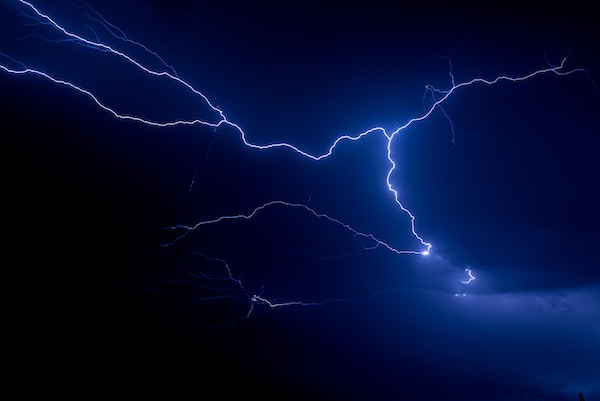
According to the Energy Information Administration (EIA), developers plan to add 54.5 gigawatts (GW) of new utility-scale electric generating capacity to the U.S. power grid in 2023. More than half of this capacity will be solar. Wind power and battery storage are expected to account for roughly 11 percent and 17 percent, respectively.
A large percentage of new installations are being developed in areas that are prone to extreme weather events and natural disasters (e.g., Texas and California), including high wind, tornadoes, hail, flooding, earthquakes, wildfires, etc. With the frequency and severity of many of these events increasing, project developers, asset owners, and tax equity partners are under growing pressure to better understand and mitigate risk.
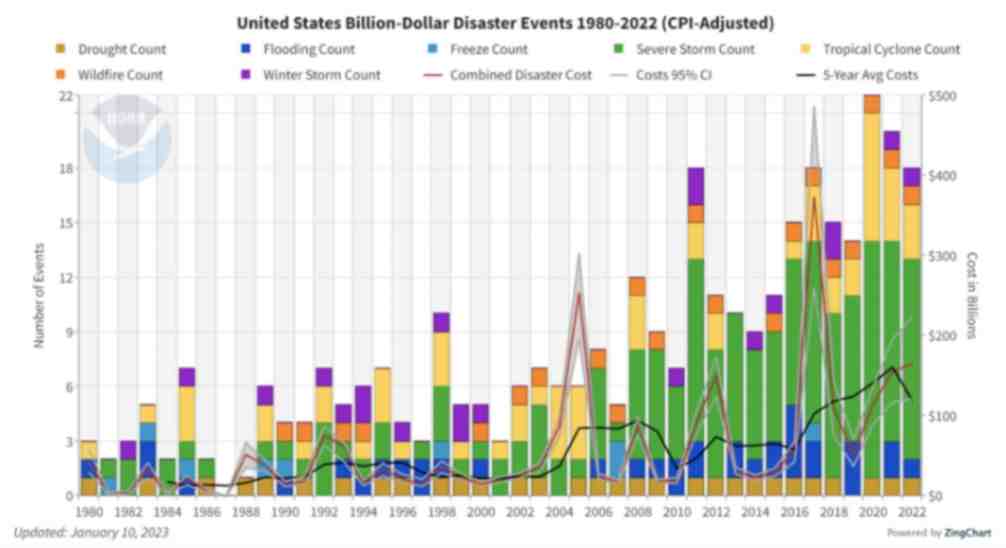
Figure 1. The history of billion-dollar disasters in the United States each year from 1980 to 2022 (source: NOAA)
In terms of loss prevention, a Catastrophe (CAT) Modeling Study is the first step to understanding the exposure and potential financial loss from natural hazards or extreme weather events. CAT studies form the foundation for wider risk management strategies, and have significant implications for insurance costs and coverage.
Despite their importance, developers often view these studies as little more than a formality required for project financing. As a result, they are often conducted late in the development cycle, typically after a site has been selected. However, a strong case can be made for engaging early with an independent third party to perform a more rigorous site-specific technical assessment. Doing so can provide several advantages over traditional assessments conducted by insurance brokerage affiliates, who may not possess the specialty expertise or technical understanding needed to properly apply models or interpret the results they generate. One notable advantage of early-stage catastrophe studies is to help ensure that the range of insurance costs, which can vary from year to year with market forces, are adequately incorporated into the project financial projections.
The evolving threat of natural disasters
Over the past decade, the financial impact of natural hazard events globally has been almost three trillion dollars. In the U.S. alone, the 10-year average annual cost of natural disaster events exceeding $1 billion increased more than fourfold between the 1980s ($18.4 billion) and the 2010s ($84.5 billion).

Investors, insurers, and financiers of renewable projects have taken notice of this trend, and are subsequently adapting their behavior and standards accordingly. In the solar market, for example, insurance premiums increased roughly four-fold from 2019 to 2021. The impetus for this increase can largely be traced back to a severe storm in Texas in 2019, which resulted in an $80 million loss on 13,000 solar panels that were damaged by hail.
The event awakened the industry to the hazards severe storms present, particularly when it comes to large-scale solar arrays. Since then, the impact of convective weather on existing and planned installations has been more thoroughly evaluated during the underwriting process. However, far less attention has been given to the potential for other natural disasters; events like floods and earthquakes have not yet resulted in large losses and/or claims on renewable projects (including wind farms). The extraordinary and widespread effect of the recent Canadian wildfires may alter this behavior moving forward.
A thorough assessment, starting with a CAT study, is key to quantifying the probability of their occurrence — and estimating potential losses — so that appropriate measures can be taken to mitigate risk.
All models are not created equal
Industrywide, certain misconceptions persist around the use of CAT models to estimate losses from an extreme weather event or natural disaster.
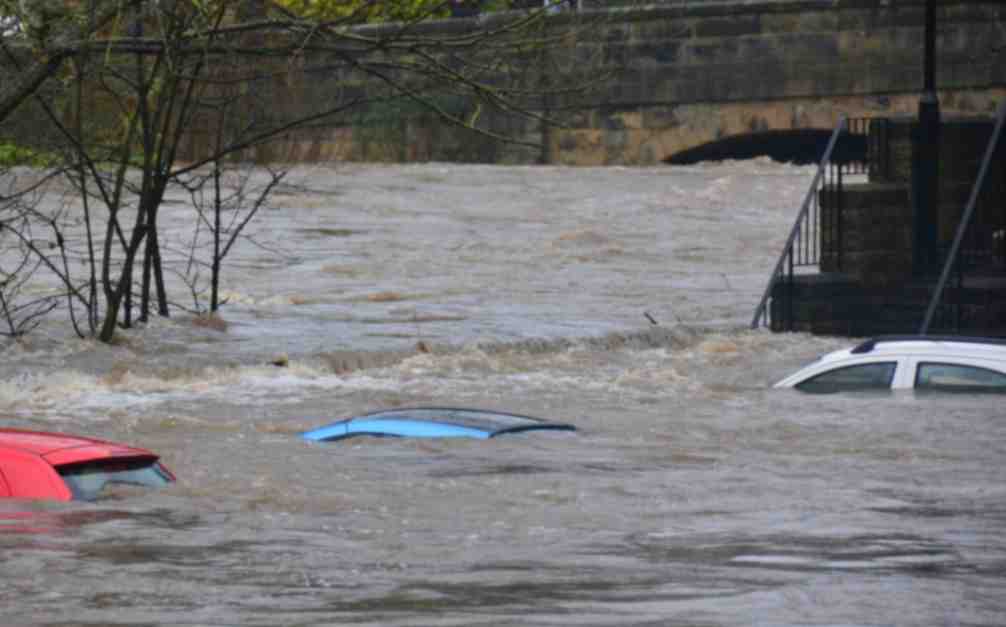
Often, the perception is that risk assessors only need a handful of model inputs to arrive at an accurate figure, with the geographic location being the most important variable. While it’s true that many practitioners running models will pre-specify certain project characteristics regardless of the asset’s design (for example, the use of steel moment frames without trackers for all solar arrays in a given region or state), failure to account for even minor details can lead to loss estimates that are off by multiple orders of magnitude.
The evaluation process has recently become even more complex with the addition of battery energy storage. Relative to standalone solar and wind farms, very little real-world experience and data on the impact of extreme weather events has been accrued on these large-scale storage installations. Such projects require an even greater level of granularity to help ensure that all risks are identified and addressed.
Even when the most advanced modeling software tools are used (which allow for thousands of lines of inputs), there is still a great deal that is subject to interpretation. If the practitioner does not possess the expertise or technical ability needed to understand the model, the margin for error can increase substantially. Ultimately, this can lead to overpaying for insurance. Worse, you may end up with a policy with insufficient coverage. In both cases, the profitability of the asset is impacted.
Supplementing CAT studies
In certain instances, it may be necessary to supplement CAT models with an even more detailed analysis of the individual property, equipment, policies, and procedures. In this way, an unbundled risk assessment can be developed that is tailored to the project. Supplemental information (site-specific wind speed studies and hydrological studies, structural assessment, flood maps, etc.) can be considered to adjust vulnerability models.
This provides an added layer of assurance that goes beyond the pre-defined asset descriptions in the software used by traditional studies or assessments. By leveraging expert elicitations, onsite investigations, and rigorous engineering-based methods, it is possible to discretely evaluate asset-specific components as part of the typical financial loss estimate study: this includes Normal Expected Loss (NEL), also known as Scenario Expected Loss (SEL); Probable Maximum Loss (PML), also known as Scenario Upper Loss (SUL); and Probabilistic Loss (PL).
Understanding the specific vulnerabilities and consequences can afford project stakeholders unique insights into quantifying and prioritizing risks, as well as identifying proper mitigation recommendations.
Every project is unique
The increasing frequency and severity of natural disasters and extreme weather events globally is placing an added burden on the renewable industry, especially when it comes to project risk assessment and mitigation. Insurers have signaled that insurance may no longer be the main basis for transferring risk; traditional risk management, as well as site and technology selection, must be considered by developers, purchasers, and financiers.
As one of the first steps in understanding exposure and the potential capital loss from a given event, CAT studies are becoming an increasingly important piece of the risk management puzzle. Developers should treat them as such by engaging early in the project lifecycle with an independent third-party practitioner with the specialty knowledge, tools, and expertise to properly interpret models and quantify risk.
Hazards and potential losses can vary significantly depending on the project design and the specific location. Every asset should be evaluated rigorously and thoroughly to minimize the margin for error, and maximize profitability over its life.
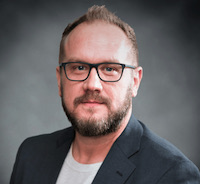 Chris LeBoeuf is Global Head of the Extreme Loads and Structural Risk division of ABS Group, based in San Antonio, Texas. He leads a team of more than 60 engineers and scientists in the US, UK, and Singapore, specializing in management of risks to structures and equipment related to extreme loading events, including wind, flood, seismic and blast. Chris has more than 20 years of professional experience as an engineering consultant, and is a recognized expert in the study of blast effects and blast analysis, as well as design of buildings. He holds a Bachelor of Science in Civil Engineering from The University of Texas at San Antonio, and is a registered Professional Engineer in 12 states.
Chris LeBoeuf is Global Head of the Extreme Loads and Structural Risk division of ABS Group, based in San Antonio, Texas. He leads a team of more than 60 engineers and scientists in the US, UK, and Singapore, specializing in management of risks to structures and equipment related to extreme loading events, including wind, flood, seismic and blast. Chris has more than 20 years of professional experience as an engineering consultant, and is a recognized expert in the study of blast effects and blast analysis, as well as design of buildings. He holds a Bachelor of Science in Civil Engineering from The University of Texas at San Antonio, and is a registered Professional Engineer in 12 states.
ABS Group | www.abs-group.com
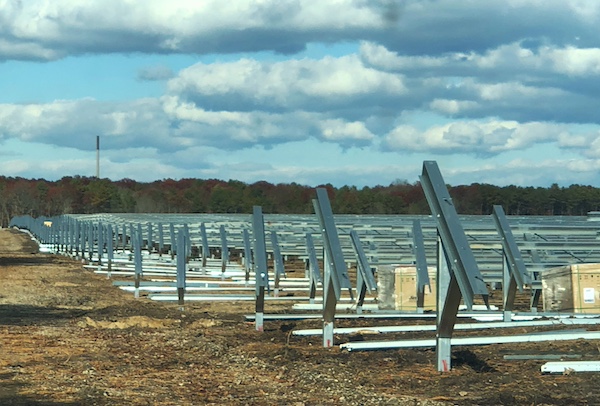
Throughout my life and career as a real estate developer in New York City, I’ve had many successes. In what is clearly one of my most unusual development projects in a long career filled with them, I initiated the building of a solar farm to help t....
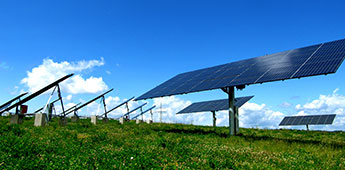
I’m just going to say it, BIPV is dumb. Hear me out…. Solar is the most affordable form of energy that has ever existed on the planet, but only because the industry has been working towards it for the past 15 years. Governments,....
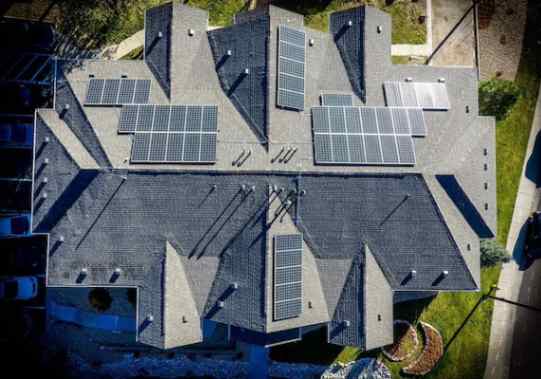
Heat waves encircled much of the earth last year, pushing temperatures to their highest in recorded history. The water around Florida was “hot-tub hot” — topping 101° and bleaching and killing coral in waters around the peninsula. Phoenix had ....
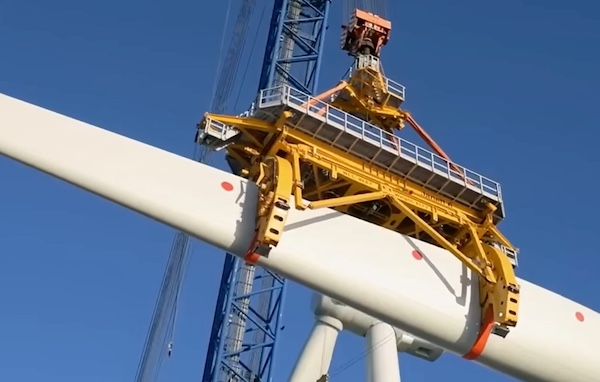
Wind turbines play a pivotal role in the global transition to sustainable energy sources. However, the harsh environmental conditions in which wind turbines operate, such as extreme temperatures, high humidity, and exposure to various contaminants, p....
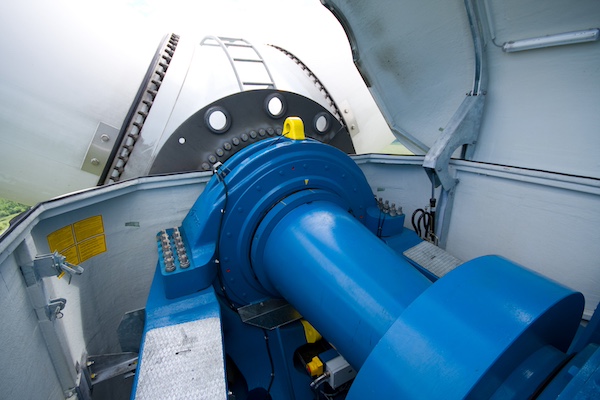
Wind energy remains the leading non-hydro renewable technology, and one of the fastest-growing of all power generation technologies. The key to making wind even more competitive is maximizing energy production and efficiently maintaining the assets. ....
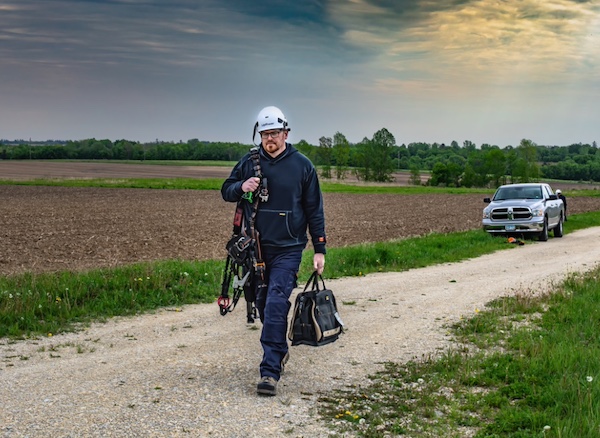
The allure of wind turbines is undeniable. For those fortunate enough to visit these engineering marvels, it’s an experience filled with awe and learning. However, the magnificence of these structures comes with inherent risks, making safety an abs....
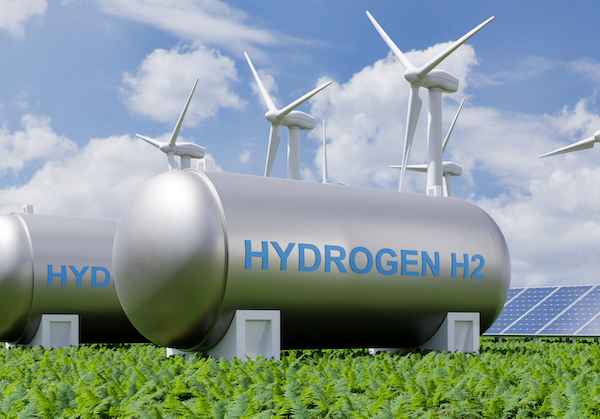
Not enough people know that hydrogen fuel cells are a zero-emission energy technology. Even fewer know water vapor's outsized role in electrochemical processes and reactions. Producing electricity through a clean electrochemical process with water....

In the ever-evolving landscape of sustainable transportation, a ground-breaking shift is here: 2024 ushers in a revolutionary change in Electric Vehicle (EV) tax credits in the United States. Under the Inflation Reduction Act (IRA), a transforma....
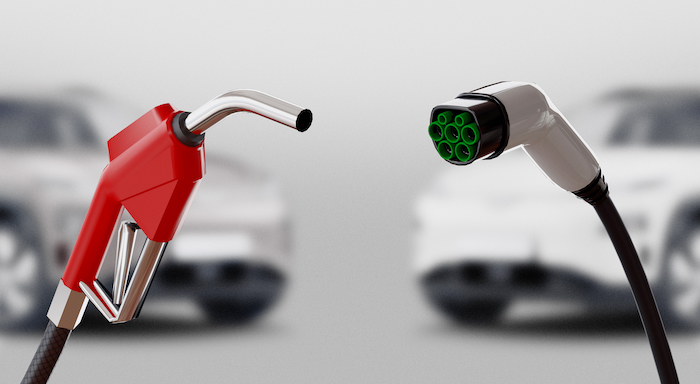
The fact that EV charging is currently cheaper than filling up your traditional gas tank has set a precedent that public EV charging will always remain less expensive. This is certainly a good thing to support the adoption of EVs, but the high infras....

Now more than ever, it would be difficult to overstate the importance of the renewable energy industry. Indeed, it seems that few other industries depend as heavily on constant and rapid innovation. This industry, however, is somewhat unique in its e....

University of Toronto’s latest student residence welcomes the future of living with spaces that are warmed by laptops and shower water. In September 2023, one of North America’s largest residential passive homes, Harmony Commons, located....
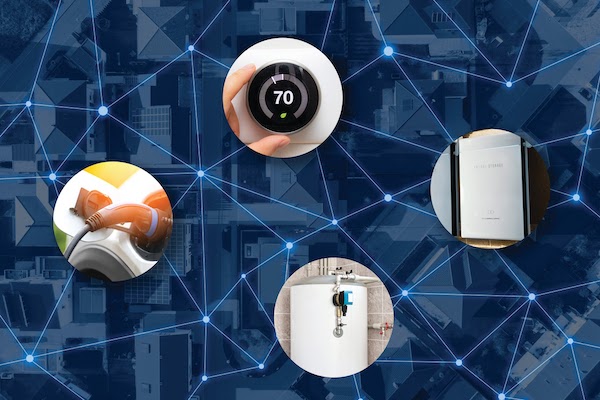
For decades, demand response (DR) has proven a tried-and-true conservation tactic to mitigate energy usage during peak demand hours. Historically, those peak demand hours were relatively predictable, with increases in demand paralleling commuter and ....